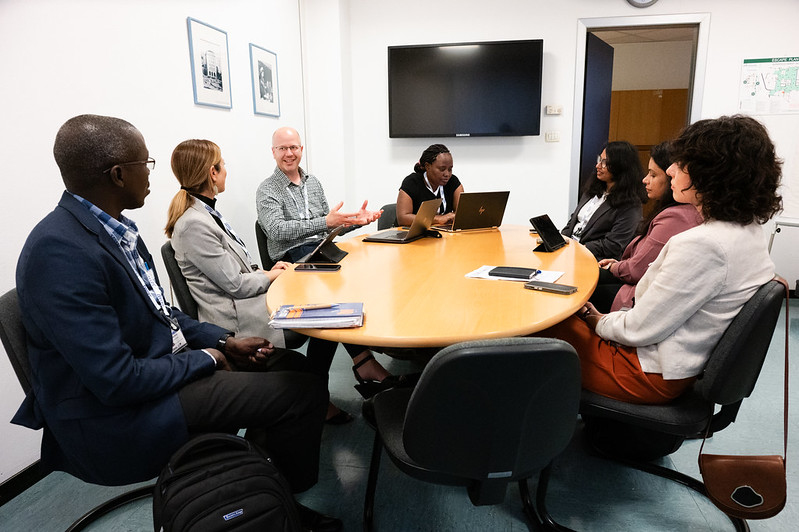
Nations need scientific advice to inform decisions for which there are daunting questions. And important answers can often be found in a rapidly growing field of science diplomacy, participants in this year’s course on the subject learned.
Science diplomacy is a broad way of describing how the fields of science and diplomacy continually support one another, and by doing so they also help society as well. Part of the idea is that the fact-focused principles of science can also speak across borders, simultaneously building knowledge and guiding leaders toward peaceful solutions to points of tension.
This year, 20 new science diplomacy enthusiasts, half with a scientific background, half with a focus in policy or diplomacy, took part in the 11th annual AAAS-TWAS Course on Science Diplomacy. In 2011, TWAS signed an agreement with AAAS—the American Association for the Advancement of Science (AAAS)—to host science diplomacy workshops and courses. TWAS has since hosted a science diplomacy course every year since 2014, and the programme has become a major source of science diplomacy education, especially for scientists from developing countries. Today, 388 course alumni from 89 countries are now influencing or implementing policies and spreading knowledge about the field throughout the developing world.
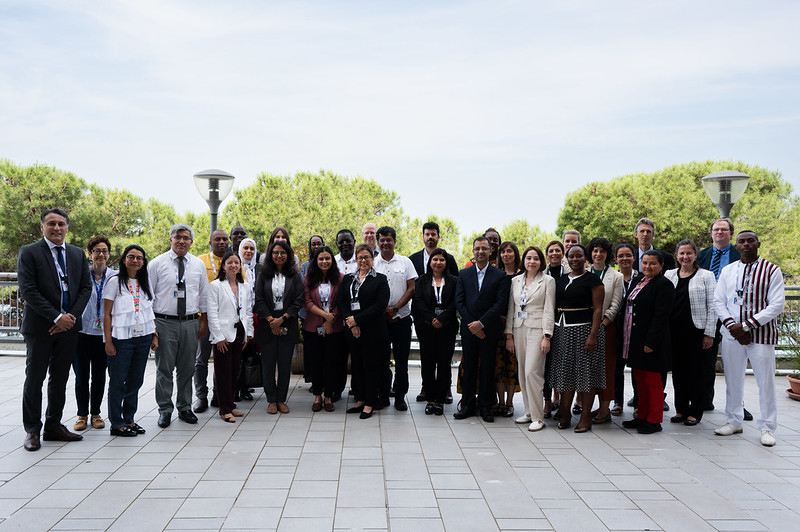
Twenty participants attended this year’s course, which took place 18–20 June 2024, in Trieste, Italy. For the fourth time, they were grouped into ‘participant pairs’ — one early-career scientist and one policymaker each from the same country — which attended presentations and discussions on issues in science diplomacy. The pairs were also challenged to play out roles in simulated negotiations on difficult topics with competing interests such as the construction of a dam on a shared river and the conservation of endangered species in a transboundary forest. Participants hailed from 11 countries, including Cameroon, Guatemala, Nepal, and Sudan.
The course receives primary financial support from Sida, the Swedish International Development Cooperation Agency, and AAAS. The Organization for Women in Science for the Developing World (OWSD) also contributed funding in 2024.
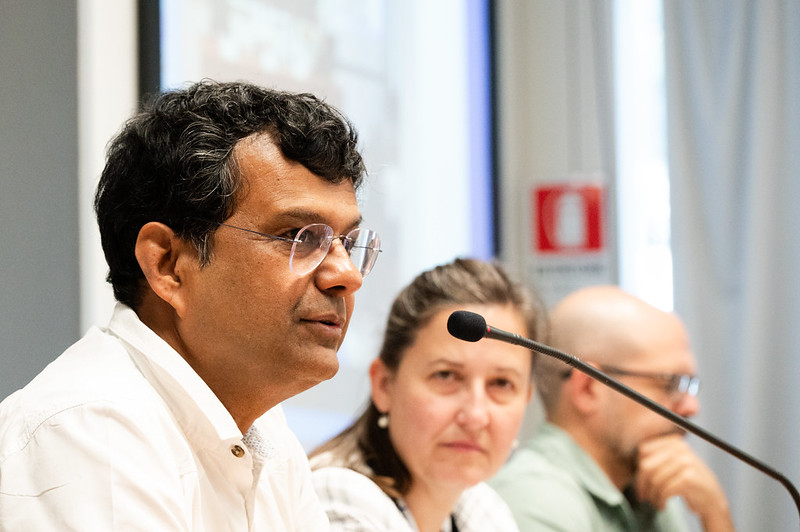
“By working within your ‘participant pairs’, in the formal and informal discussions with our invited speakers, and by interacting with those who have worked in the space between science and decision-making, I hope you will leave here with a greater understanding of the wider role that scientists are playing in global society — a role that goes far beyond the lab bench, field trials, clinical trials, or indeed the classroom,”
Minister Plenipotentiary Giuseppe Pastorelli, Deputy Director General for the Promotion of Italy at the Italian Ministry of Foreign Affairs and International Cooperation, and a key supporter of TWAS, told participants in a recorded message that science and diplomacy are the guiding principles of the course.
“If you have science, it means you make decisions based on fact, and that is very important,” Pastorelli said. “But also, if you have diplomacy, it means that you can achieve greater scientific discoveries.”

The ‘lifeblood’ of informed decisions
The keynote speaker for the event was Ivonne Higuero, Secretary-General of the Convention on International Trade in Endangered Species of Wild Fauna and Flora (CITES). She said that science diplomacy is at the heart of all scientific processes, which is collaborative by its nature.
“Science is not merely an academic pursuit of publishing papers. It is the lifeblood of informed decision making, and the foundation on which we build policies that transcend borders, cultures, and economies that benefit both people and nature,” CITES Secretary-General Higuero said.
“Gathered here today among you are researchers and professors and policy advisors,” she added. “You are not just scientists and representatives of your respective nations. You are also custodians of a living planet that depends on our collective wisdom and action.”
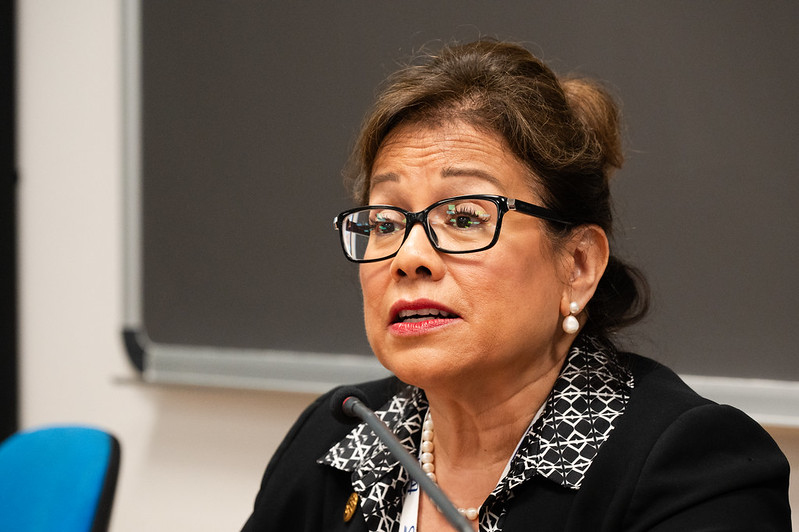
CITES is an international agreement between 183 governments and the European Union that aims to ensure that international trade of wild animals and plants does not threaten the survival of the species in the wild. Science diplomacy is at the heart of work at CITES, Higuero said, which regulates the trade of specimens of over 40,000 species of animals and plants and seeks to keep the market legal, sustainable, and traceable—all of which requires the contribution of scientific analysis.
Science, she said, does not operate in a vacuum, but is interwoven with politics, diplomacy, economics, and livelihoods. This interconnectedness is what renders science diplomacy a necessity, especially if nations want to meet the Sustainable Development Goals by 2030. She cited vaccine research, climate change, and wildlife preservation as transboundary issues in which science must tap diplomatic principles to operate effectively.
“Today you become part of a rich tradition of using science collaboratively to solve global challenges, enhance international relationships, and cross borders with universal principles to create a better world for all,” Higuero encouraged. “I commend you for your dedication to the cause and wish you an illuminating course ahead.”
Reaching beyond the lab
Participants heard talks about standout examples of science diplomacy including research on Mt. Paektu in the Democratic People’s Republic of Korea, the international high-tech laboratory in the Middle East called SESAME, and the effect of science on thawing U.S.-Cuba relations. They also took part in simulated scenarios in which they were split into groups in which each participant pair represented a different group—such as a nation or international organization—with a stake in the negotiations.
Ultimately, the participants said they appreciated the course for how it brought new areas into their skill sets. Nassiba Baimatova, an air quality researcher from Kazakhstan and the head of the ‘Ecology of Biosphere Laboratory’ at Al-Farabi Kazakh National University in Kazakhstan, said that she saw it as an opportunity to improve her communication skills. As a scientist, she recognized that “only publishing data does not go so far,”she said, and it’s important to be able to engage the public and policymakers in clear and accessible language.
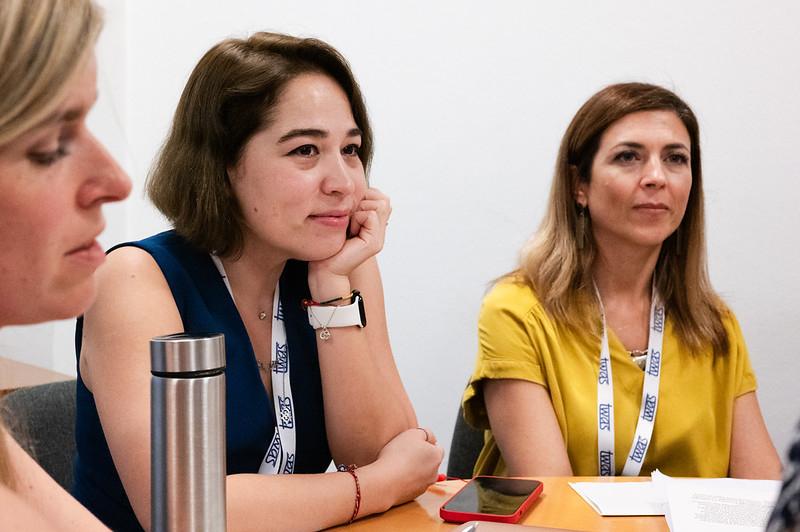
“In my country, unfortunately, we don’t have science communicators,” Baimatova said. “That’s why I face double the pressure: I should do scientific research, lead my team, and publish papers—but in order to publish I need to negotiate for funding. Just publishing the data on social media is not enough.”
One participant pair, from Cameroon, have known each other for years. Peter Teke Ndifon, a materials chemist and technical adviser for the Cameroon Ministry of Scientific Research and Innovation,worked with Linda Dyorisse Nyamen Mbong, a nanomaterials scientist with the University of Yaoundé 1, for years before moving into policy-related work.
“Science diplomacy brings to light what scientists need to do,” said Ndifon. “You identify an issue then you seek to see how that issue can be resolved, either locally through government policy or through international negotiations, which is why we’re here to study science diplomacy.”
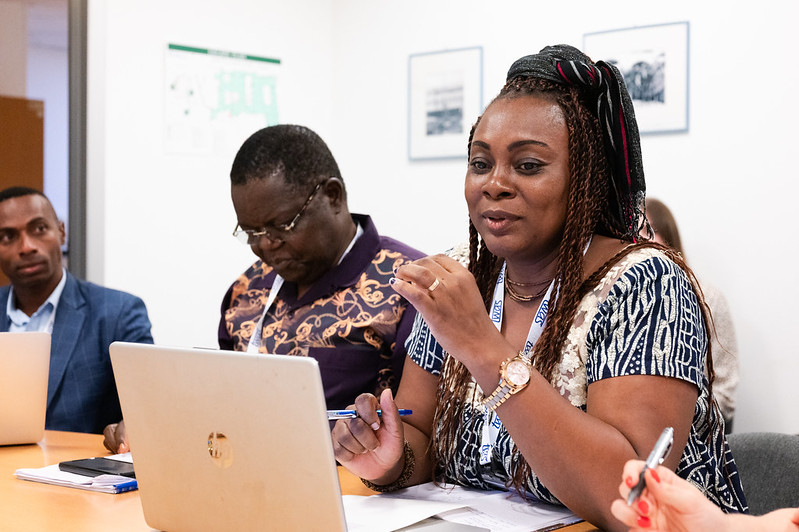
Nyamen said she is more of a “pure scientist.” She said a major message of the event was that scientists who want to facilitate change need to attend to the realities of science policy and diplomacy. Nyamen, who is also an OWSD fellowship awardee, said this means sharing information with other scientists as well as policymakers.
“As a scientist, I should think beyond my laboratory and make sure that my research package actually addresses the global issues, and look for truths to be able to communicate to policy makers,” she said. “That’s the only way I can really bring change.”
Sean Treacy
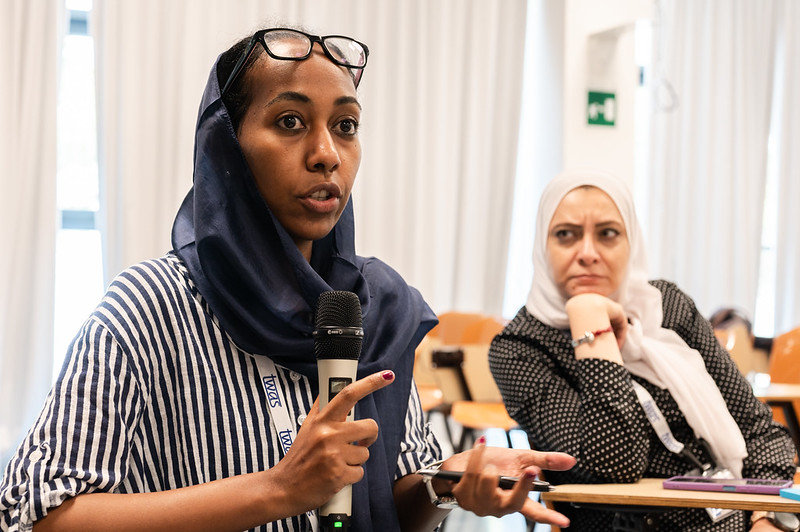
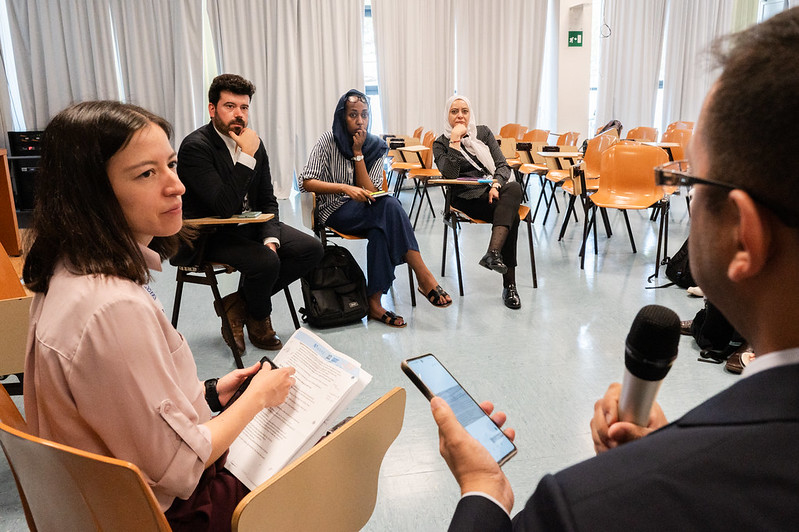

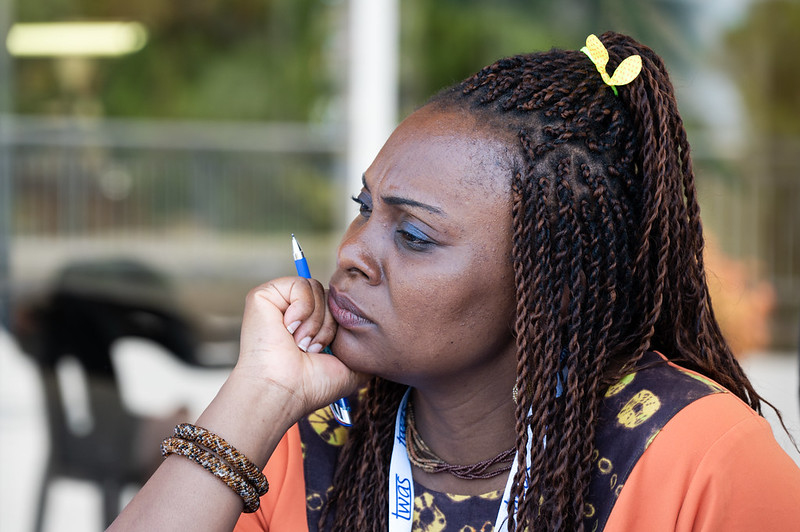
---
For more photos from the event, see the TWAS Flickr Page.

